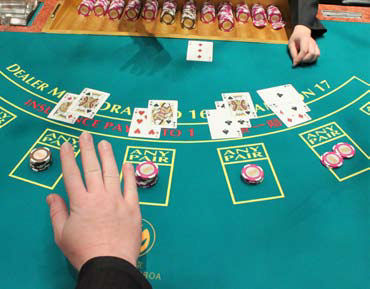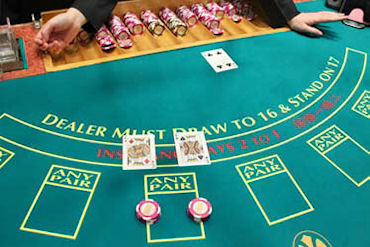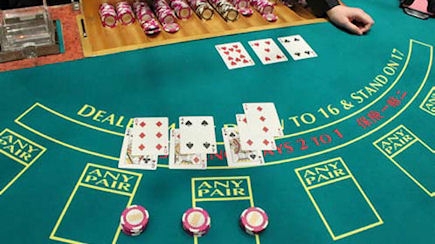This article first appeared in the Mar/Apr 2012 issue of World Gaming magazine.

How it should be done
Whenever you play blackjack, and the dealer deals two tens to you (that’s two of 10, J, Q or K), you should be very happy. No matter what the dealer’s starting card is, you already have a total of 20. Those who often frequent the blackjack tables are aware this hand has a good chance to win, and most players will not hit or split. You just stand and wait to win. As long as the dealer does not get blackjack or 21, you won’t lose. Moreover, we know that once the dealer’s cards get to 17, 18 or 19, he has to stand, and you win immediately.
I think all blackjack players have experienced or seen someone splitting tens. Each picture card becomes a single 10, and the player will receive at least one more card on each 10. Sometimes a player will receive more tens, get even greedier and keep splitting! If a player and the dealer play heads up, he only has himself to argue with, but sometimes splitting tens happens on tables with multiple players. When this is the case, we often hear sounds of shock at the table. If the dealer gets a good hand and kills the table, all the people around will condemn the person who split the tens.
“20 is big enough, why split, and we all lose!”
“Do you know the rules, split when you’ve got 20, you’re insane!”
If your splitting causes the whole table to win, you will earn fame and fortune, like a hero. However, when a player splits tens, the other players notice the losing times more than the winning times. An experienced player will never split tens. Why is this?

The greedy (and incorrect) way
We can use the idea of “fair price” to explain the answer to this question. Let’s analyze it through the most commonly seen tens splitting situation, which is when the dealer holds a 6, his weakest possible card. Starting with his 6, the chance of the dealer getting 21 is around 10 percent, the chance of him getting 20 is around 10 percent, and the chance of anything else is around 80 percent. Imagine our bet is $1,000. On average 80 percent of the time we will win, 10 percent of the time we get a push, and that leaves a 10 percent chance of losing. Our “average net win” on this hand is $700 per $1,000 bet. If someone wanted to “buy” your result from you at the moment you stood on 20 against a dealer 6, but before the dealer drew his cards, the fair price would be around $700.
If we split, our 20 becomes two tens facing the dealer’s 6. Calculating the chance of winning here is very complicated, so let’s skip the detailed explanation, but I can tell you the result. The “average net win” for a ten against a 6 is 29 percent of the bet amount. Yes, it’s also a profitable hand, but not nearly as high. If you split your cards, you will have two lots of 29 percent, so the “fair price” of selling your result at this moment would be 58 percent. But you still earn 12 percent less than you would if you did not split. Before you ask, yes these numbers already account for the possibility of getting further splits by drawing another 10 on any of your split tens. And remember, by splitting, the money you have placed at risk has increased by 100 percent.
The correct way of playing a hand of 20 when faced with any of the 10 possible dealer starting cards (2, 3, 4, 5, 6, 7, 8, 9,10 and A) is not to split your tens. Just stand on 20 and wait to win! Splitting tens is a crazy way to play.







